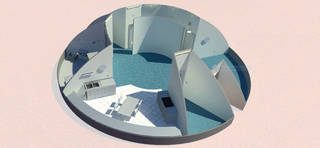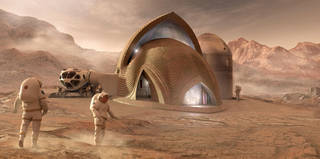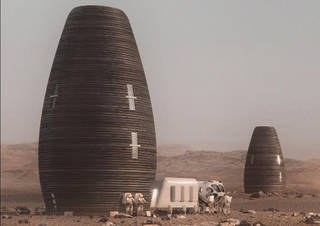Habitat Fever
- Tim Chrisman
- Apr 17, 2019
- 5 min read
For most of us being stuck inside for an extended period of time is a choice. Some prefer it, some don’t. But for virtually all of us, at some point we need to see the sky, experience other humans, and socialize. Without those we feel the sensation of ‘cabin fever’.
These are not things we can count on experiencing once we venture out into space. For starters – the sky may just be the endless black of space. But more on that later…for now lets see how Mike is doing….
The Fun Part
Mike liked to think of himself as a a self sufficient person. He had after all grown up in the slums of what had been Memphis. Well he thought, it was still there….just looked a little different now that the Mississippi had expanded. But even before that Mike had been really good at living off the land. His dad had taught him to hunt. His mom made him cook whatever he caught. And the lack of entertainment growing up meant he was supremely comfortable outdoors.
None of that had prepared him for what he found as he stepped off the Space X starliner Gateway to Mars a month ago. The small cluster of dome shaped houses seemed more reminiscent of a camping tent he used to use in the woods rather than permanent homes. He saw what he assumed was an ice processing facility about 200 meters away from any of the other buildings, and a handful of greenhouse looking domes. Other than that – the entire colony seemed to have no more than 15 buildings total for all 100 people.
It had only been a month, but things had seemed to change so much. It seemed like yesterday that the thought of putting his feet on firm ground was going to solve all his problems. But now Mike realized that had just been his mind trying to cope with the reality of a six month trip with 50 strangers.
Now, it seemed like he had no choice. It wasn’t like he didn’t like most of the people here…it was just he had to do something. Without action he was going to lost the last bit of what wanted more than anything…autonomy.
Mike laughed as he double checked the drill. It was ironic wasn’t it. He came here looking for autonomy, and found the combination of a militant sense of order and near total isolation overwhelming. And he knew he wasn’t the only one who thought so. But why weren’t the originals doing something about it? Those first ten colonists had been here for almost two years…clearly they had gone native and couldn’t be trusted to actually run things now that real people were here.
It wasn’t so much that he had a problem killing them. Mike felt like…well he couldn’t put words to it…there was something else. A vague feeling in the back of his mind that something was missing…maybe it was just his old instincts reacting to him not having a real weapon. Either way the time for action was now. The rest of the new crew was waiting for him, an once the originals were out of the way then things could finally get right again.
The Real Deal
Social order is more fragile than we think. It depends on the tacit agreement of the majority of participants, and is reinforced through social interaction. A combination of hard living, limited resources, and isolation may the ideal setting for a collapse of early versions of martian society.
The Astrosociology Research Institute is an organization dedicated to developing the nascent area of astrosociology. The institute was founded by Jim Pass, who received his sociology PhD from the University of Southern California in 1991. In 2003, Pass created a website focusing on how sociology can apply to space travel. The institute was founded in 2008, and lists a number of academics as part of its research team. Its Journal of Astrosociology has already published two volumes.
Pass views cabin fever as an inevitable side effect of space travel as we currently conceive of it. The long travel times, small ships, austere habitats are all almost guaranteed to wreak havoc on the human psyche. Pass advocates a more thoughtful approach to how we do this space thing.
We can’t count on things ‘just working out’. There may be similarities between space and ocean travel, but the critical difference is that at the end of the day sailors, colonists and travelers could socialize anywhere. Being limited by where oxygen and heat are present is going to be a bigger problem that we may realize now.
“As the population on Mars gets larger, it also becomes more stranger oriented,” Pass says. “In a small group, people know each other pretty well, but then as a group grows, then it becomes a situation where people start to form their own social groups and relationships, and they tend to isolate themselves into those kinds of structures.”
For this reason, Pass is worried that some concepts for future Mars settlements don’t contain enough socializing spaces. A central dome would enable greater interaction, perhaps with a park or other amenities.
Current Martian Housing plans
In 2018, NASA and partner Bradley University of Peoria, Illinois, selected the top five teams to share a $100,000 prize in the latest stage of the agency’s 3D-Printed Habitat Centennial Challenge competition. Winning teams successfully created digital representations of the physical and functional characteristics of a house on Mars using specialized software tools. The teams earned prize money based on scores assigned by a panel of subject matter experts from NASA, academia and industry.
The actual designs of these habitats varied, as you can see in the photo gallery above, but all shared a similarity – a lack of communal space. This isn’t a critique of the teams’ submissions, but instead the idea that all humans will need in a living space is protection from the elements. We are intrinsically social animals, and we have yet to live in an environment where we couldn’t just gather outside. As we move into space that is no longer an option, and we will have to build social spaces into our environments.
A related issue with these hypothetical dwellings is the heightened risk of isolation. Trips from Mars to Earth can take between three to six months, and even radio signals take around 20 minutes. It’s not the same as spending months in the space station or on the moon, where communication can still pass back to earth quickly. Home is also a (relatively) short space flight away.
Martian colonists will not have these luxuries, which means their living situation will require much more careful planning. Putting groups of people into such an environment without a rigid structure is going to create ripe conditions for chaos.
The early inhabitants of, say, could probably simply follow a command structure similar to NASA or the military. But over time, a growing population would require the inhabitants to divide labor similar to villages on Earth.
Conclusion
This isn’t meant to be a dire warning, of inevitable doom. Instead, we should remember we solved the social order issue here on earth, and with planning, we can do it again as we venture further from our birthplace.
Sign up below if you want to be added to our email list for updates on the pre-history of humanity’s second century of space. Until next time – may the light of science guide you on your journey through the void.
Type your email…
Subscribe
.png)













Comments